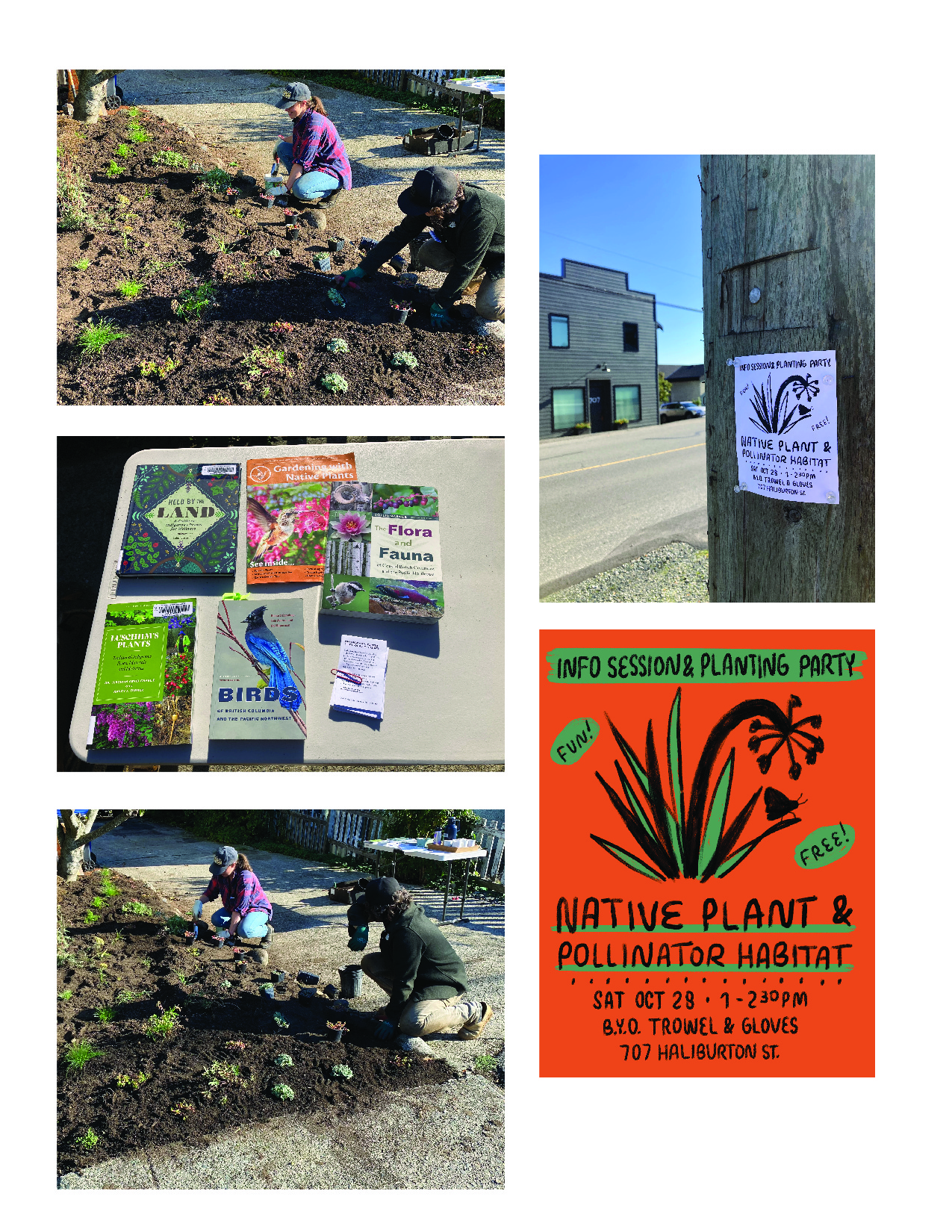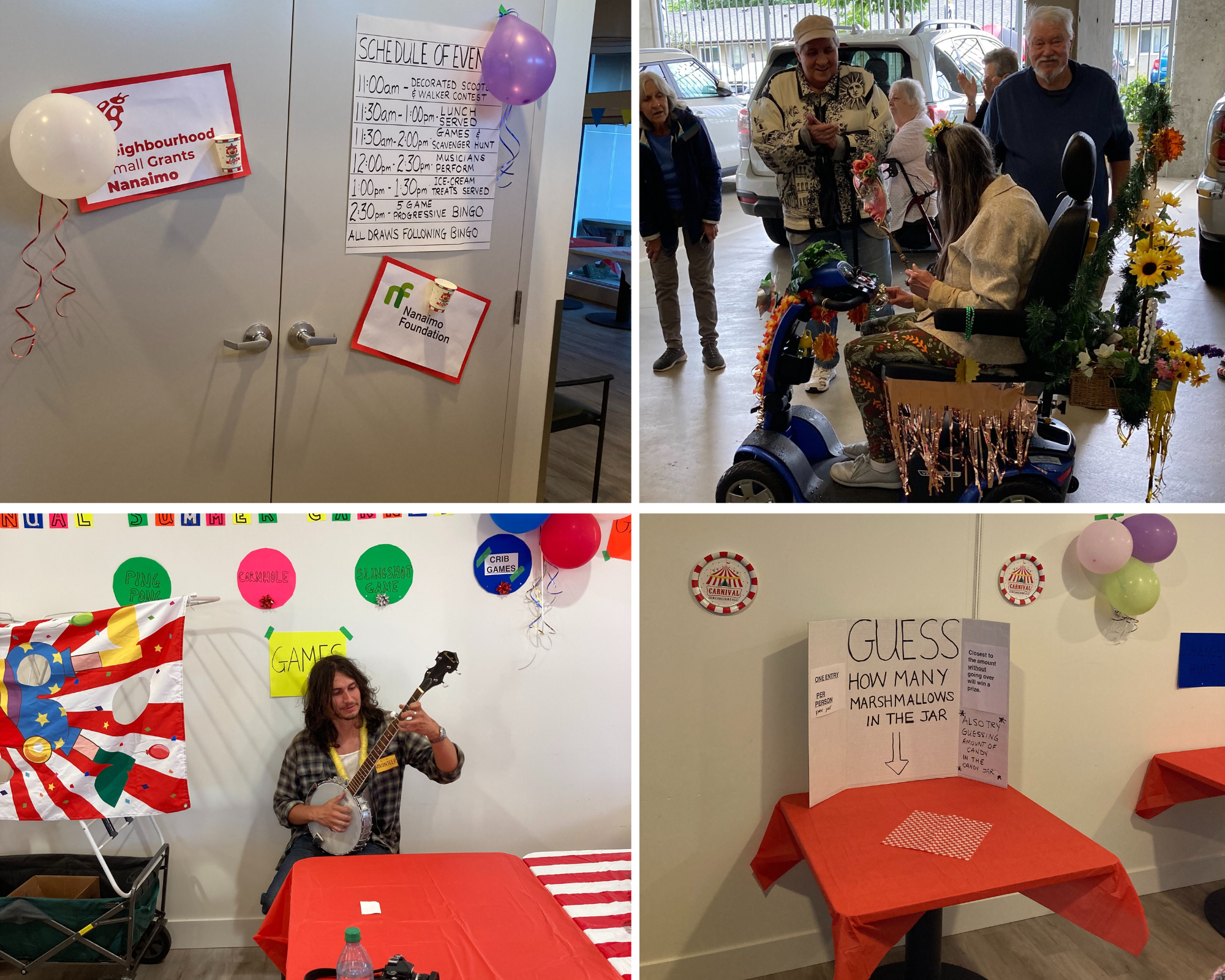This project began with a desire to add greenery and biodiversity to the block on which I live. It is the one block on our street that doesn’t have a grass boulevard or trees and is a sea of concrete sidewalks and asphalt. Biodiversity is integral for wildlife and plant life, for regulating temperatures in paved areas, and for improving the mental and physical well-being of the community. Installing a native plant habitat would increase greenery and attract and sustain our local wildlife. The planting area runs beside the sidewalk so that neighbours can enjoy and learn from the habitat area.
For this event, the local community was invited via posting to the neighbourhood Facebook group and on my Instagram account. I also illustrated and posted up flyers in the neighbourhood, including on the park bulletin board and book nook. We had a small group of participants, however, we got right to work and were able to connect closely on the project and discuss our interest in native plants and biodiversity.
I knew that I wanted the planting party to be more than just digging in the dirt and calling it a day, so to deepen the experience a few layers were added:
1. I brushed up on my knowledge of the native plants and created a mini booklet with information about the plant species we were installing. Each entry included the western, Latin, and Hul’q’umin’um names as well as growing conditions and uses for the plant. Also included in the booklet is a list of local and online native plant resources for people to continue their learning after the event.
2. There was an informational table set up with books about native plants and wildlife from my own collection for participants to peruse. I felt that there wasn’t a wide enough range of reading materials, so requested two books from the library in order to cover topics around traditional and medicinal uses of native plants, and local, indigenous knowledge of native plants.
3. A Vancouver Island-based collective is currently distributing free native plant seeds. I had received a variety of seeds from them, which, along with seeds collected from my own plants, gave me enough to share with others. I set out a tray of homemade labeled seed packs for participants to take home and plant.
4. Signage was installed to indicate that the garden is a native plant and pollinator habitat with URLs for finding out more information about pollinators and plants via the Pollinator Partnership.
Through running this event, I learned that people are interested in native plants and increasing biodiversity in their neighbourhoods, but don’t necessarily know where to start. Access to information and cost are barriers to why people don’t pursue gardening in general and using native plants in particular.


